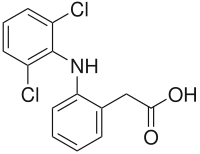
Photo from wikipedia
The implementation of ecologically relevant sub-lethal endpoints in toxicity testing with freshwater mussels can provide valuable information during risk assessment, especially since these organisms are often exposed to low levels… Click to show full abstract
The implementation of ecologically relevant sub-lethal endpoints in toxicity testing with freshwater mussels can provide valuable information during risk assessment, especially since these organisms are often exposed to low levels of contaminants. This study examined how to optimize quantifying the filtering capacity or clearance rate (CR) of mussels after exposure to a reference toxicant, sodium chloride (NaCl). CR was defined as the number of algal cells an individual mussel can remove from the overlying water by filtration over time and was determined using spectrophotometric absorbance and direct microscopic examination. Optimization included consideration of the following factors: concentration of algae mixture at test initiation, duration of CR assay, and statistical power. Experimental vessels contained either juvenile (ten, ~ 4 months old) or adult (one, ~ 2.5 years old) Lampsilis siliquoidea. To detect a 10% change in filtering capacity, the optimized adult CR assay was run for 48 h with 2.7 × 107 cells/mL of algae added at test initiation and a minimum of 6 replicates per treatment. The optimized juvenile mussel CR assay was run for 48 h with 1.77 × 107 cells/mL of algae added at test initiation; however, 13 replicates would be required to detect a 10% change to satisfy each method. To reduce the number of juvenile mussels used in testing, a minimum of 4 replicates per treatment was recommended to detect a 25% change in CR. After exposure to a reference toxicant (NaCl), EC50s from the optimized CR assay were compared to two other mussel toxicity endpoints: survival and burial (ability of mussels to bury in clean sand). CR by direct microscopic examination was slightly more sensitive than survival and burial in juveniles and only slightly more sensitive than survival in adults. No significant differences (p > 0.05) were detected between the EC/LC50 values determined from CR and the less labour-intensive survival and burial endpoints. The present study suggests the CR for juvenile and adult L. siliquoidea remained largely unaffected in mussels that survived a 7-day NaCl exposure.
Journal Title: Ecotoxicology and environmental safety
Year Published: 2018
Link to full text (if available)
Share on Social Media: Sign Up to like & get
recommendations!